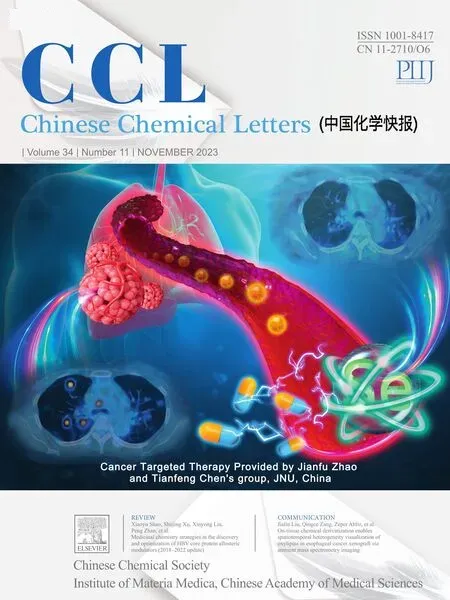Activating weak electrophiles to break nonpolar C-C bonds with electric fields
Electrophilic aromatic substitution (EAS) is a vital chemical reaction in organic chemistry that involves replacing substituent on an aromatic ring by an electrophile.Despite its widespread industrial applications in the production of substituted aromatic compounds,the reaction typically requires harsh reaction conditions,such as high temperature and potent Lewis acid catalysts,to activate the electrophile due to the stability of the aromatic ring [1].
Recently,a study published by Yaping Zang and colleagues inNatureCommunicationsdemonstrates the use of an electric field as a catalyst to regulate EAS reactivity,replacing conventional chemical reagents.The research team discovered that an electric field could activate an otherwise unreactive electrophile and break inert nonpolar C-C bonds under mild conditions.These unprecedented results showcase the potential for broadening the scope of EAS reactionsviaelectric field catalysis.
Previous research has explored various chemical reactions catalyzed by oriented external electric field (OEEF) [2–4].While OEEF can theoretically promote charge separation and catalyze EAS reactions,achieving the necessary large electric field using traditional ensemble techniques has proven difficult [5,6].Additionally,OEEF has strict requirements for orientation,with an almost perpendicular alignment needed to promote electrophilic attack and charge transfer [7].Achieving this microscopic alignment is highly challenging in experiments.
To overcome these challenges,the team employed the scanning tunneling microscopy break junction (STM-BJ) technique to investigate the OEEF-catalyzed EAS reaction of a range of hoop-shaped hydrocarbons (Fig.1) [8].The STM-BJ method enables the creation of a sufficiently large OEEF within an Au tip-substrate nanogap upon a bias voltage.Furthermore,the molecules’distinct radialπconjugated structure enables the OEEF perpendicular to the aromatic ring,achieving optimal alignment of the OEEF along the EAS reaction axis.

Fig.1.Schematic representation of OEEF catalysis of EAS reactions.(a) Schematic of single-CPP junction.(b) The proposed mechanism of the OEEF-catalyzed EAS reaction which proceeds via a transition from π-complex to charge-separated σcomplex intermediate.Reprinted with permission [8].Copyright 2023,Springer Nature.
Based on this technique,the team demonstrate that the OEEF can significantly accelerate the EAS by the otherwise unreactive Au electrophile under very mild conditions (using a bias voltage of<1 V).This EAS reaction cleaves the inherently inert C(sp2)-C(sp2)bond,which is of great importance in synthetic chemistry but generally very difficult to realize.These OEEF-catalyzed EAS reactions result in a ~97% high-yield production of linear oligophenylenes terminated with covalent Au-C bonds.Density functional theory(DFT)-based calculations reveal a classic two-step mechanism in the EAS reactions,in which the electric field plays a critical role in promoting the formation of the key charge-separatedσ-complex intermediate.
This work represents a significant advancement in the application of single-molecule techniques to electric field catalysis of chemical reactions.Through a series of well-designed experiments,it provides compelling evidence that OEEF can serve as a catalyst for EAS reactions.This research also opens up new avenues for investigating the mechanisms underlying classical organic reactions and demonstrates the potential of single-molecule technology to realize challenging chemical reactions.
 Chinese Chemical Letters2023年11期
Chinese Chemical Letters2023年11期
- Chinese Chemical Letters的其它文章
- Enhancing electrochemical conversion of lithium polysulfide by 1T-rich MoSe2 nanosheets for high performance lithium–sulfur batteries
- TiO2 nanorods based self-supported electrode of 1T/2H MoS2 nanosheets decorated by Ag nano-particles for efficient hydrogen evolution reaction
- Construction of highly stable LiI/LiBr-based nanocomposite cathode via triple confinement mechanisms for lithium-halogen batteries
- Molecular dynamics simulations of the Li-ion diffusion in the amorphous solid electrolyte interphase
- Enhanced Li+ migration in solid polymer electrolyte driven by anion-containing polymer-chains
- Spectroscopic identification of water splitting by neutral group 3 metals
